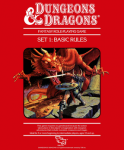Class Features
As a rogue, you have the following class features.
Hit Points
Hit Dice: 1d8 per rogue level
Hit Points at 1st Level: 8 + your Constitution modifier
Hit Points at Higher Levels: 1d8 (or 5) + your Constitution modifier per rogue level after 1st
Proficiencies
Armor: Light armor
Weapons: Simple weapons, hand crossbows, longswords, rapiers, shortswords
Tools: Thieves’ tools
Saving Throws: Dexterity, Intelligence
Skills: Choose four from
Acrobatics,
Athletics,
Deception,
Insight,
Intimidation,
Investigation,
Perception,
Performance,
Persuasion,
Sleight of Hand, and
Stealth
Equipment
You start with the following equipment, in addition to the equipment granted by your background:
- (a) a rapier or (b) a shortsword
- (a) a shortbow and quiver of 20 arrows or (b) a shortsword
- (a) a burglar’s pack, (b) a dungeoneer’s pack, or (c) an explorer’s pack
- Leather armor, two daggers, and thieves’ tools
Expertise
At 1st level, choose two of your skill proficiencies, or one of your skill proficiencies and your proficiency with thieves’ tools. Your proficiency bonus is doubled for any ability check you make that uses either of the chosen proficiencies.
At 6th level, you can choose two more of your proficiencies (in skills or with thieves’ tools) to gain this benefit.
Sneak Attack
Beginning at 1st level, you know how to strike subtly and exploit a foe’s distraction. Once per turn, you can deal an extra 1d6 damage to one creature you hit with an attack if you have advantage on the attack roll. The attack must use a finesse or a ranged weapon.
You don’t need advantage on the attack roll if another enemy of the target is within 5 feet of it, that enemy isn’t
incapacitated, and you don’t have disadvantage on the attack roll.
The amount of the extra damage increases as you gain levels in this class, as shown in the Sneak Attack column of the Rogue table.
Thieves’ Cant
During your rogue training you learned thieves’ cant, a secret mix of dialect, jargon, and code that allows you to hide messages in seemingly normal conversation. Only another creature that knows thieves’ cant understands such messages. It takes four times longer to convey such a message than it does to speak the same idea plainly.
In addition, you understand a set of secret signs and symbols used to convey short, simple messages, such as whether an area is dangerous or the territory of a thieves’ guild, whether loot is nearby, or whether the people in an area are easy marks or will provide a safe house for thieves on the run.

